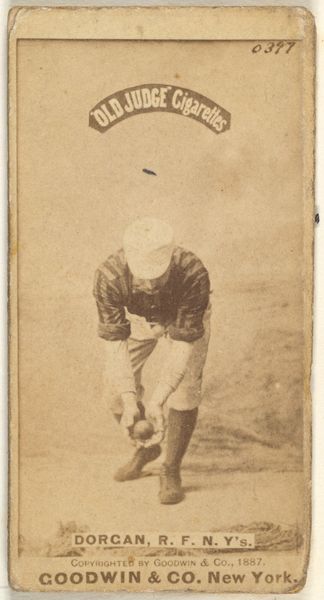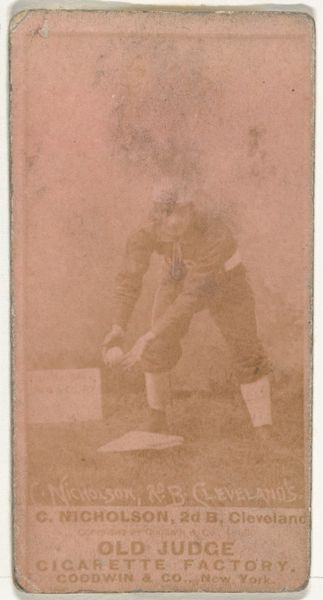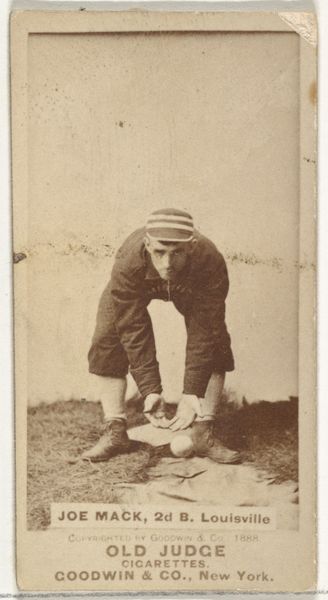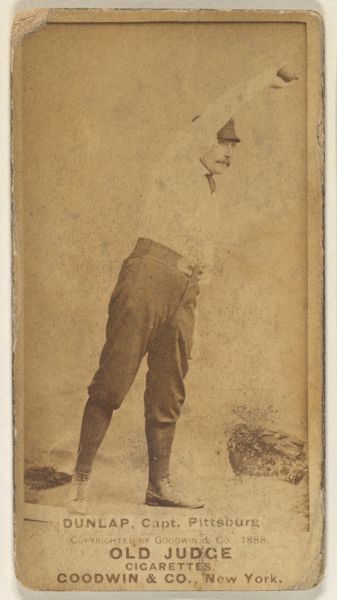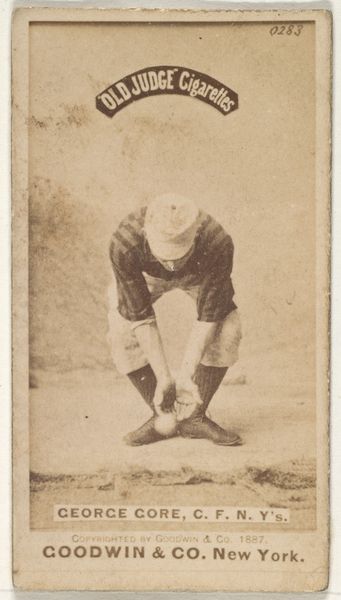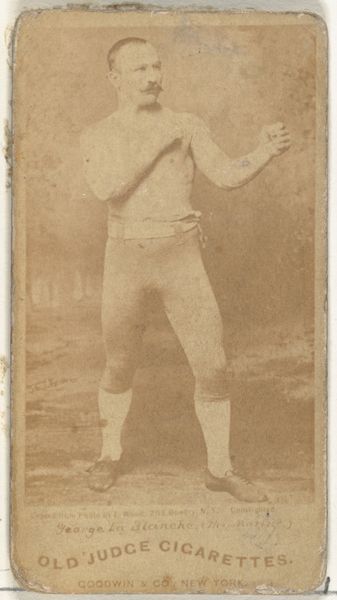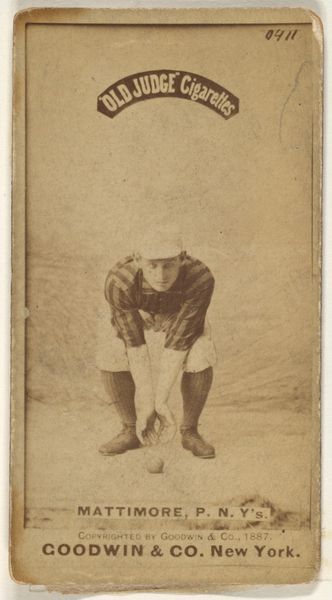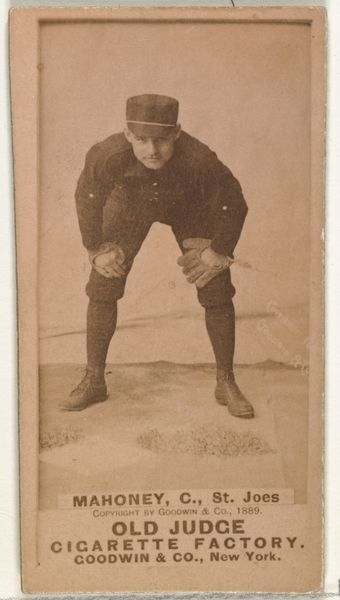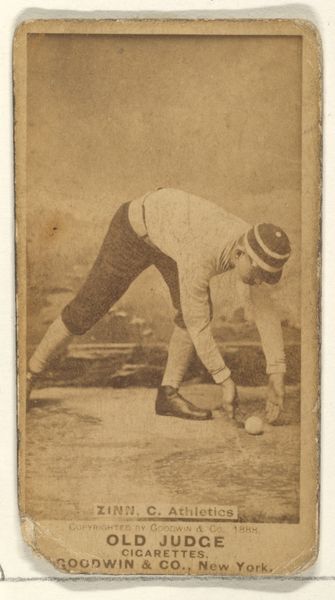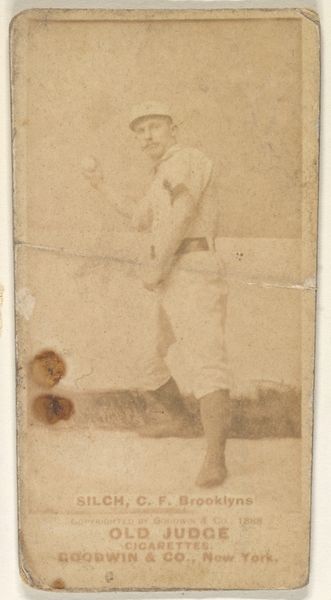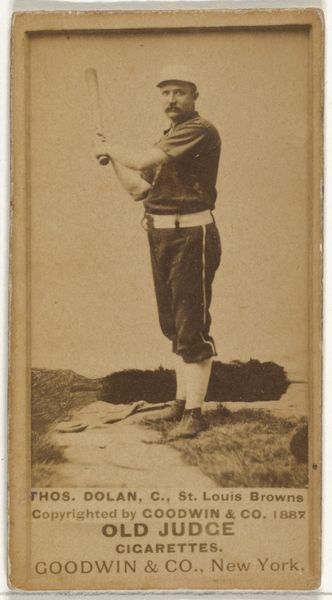
John Thomas Pickett, Shortstop, St. Paul Apostles, from the Old Judge series (N172) for Old Judge Cigarettes 1888
0:00
0:00
drawing, print, photography
#
portrait
#
drawing
# print
#
baseball
#
photography
#
coloured pencil
#
men
Dimensions: sheet: 2 11/16 x 1 3/8 in. (6.9 x 3.5 cm)
Copyright: Public Domain
Editor: So, here we have "John Thomas Pickett, Shortstop, St. Paul Apostles" from 1888, a photographic print, part of the "Old Judge Cigarettes" series. It's fascinating to see baseball immortalized this way. What strikes me is how this mundane object – a cigarette card – elevates a baseball player to a kind of folk hero. What do you see in this piece, from your perspective? Curator: What's compelling to me is precisely that intersection of commerce, labor, and leisure. This isn’t just a photograph; it's a mass-produced commodity inextricably linked to the tobacco industry. Consider the materiality of this card – the paper stock, the printing process. Each card represents a transaction, a unit of labor both in its production and, arguably, in its consumption. Do you think the accessibility of this image through these cards shaped Pickett’s fame? Editor: Absolutely. The card turns Pickett into a consumable image. It also democratizes art in a sense. You didn't need to visit a gallery to "own" a portrait. It's a tiny, affordable piece of celebrity. It is a portrait but it’s functioning as an ad. It blurs the line between art, advertisement, and collectible. Curator: Exactly. The materiality of the card, the mass production – it challenges that idea of the unique art object. Think of the labor involved in producing countless copies, distributing them, and the sheer waste of resources associated with cigarette consumption. How might that inform our reading of the image itself? Editor: I hadn't considered the waste aspect before. Now I'm thinking about the ephemeral nature of both the baseball career and the cigarette card. They're both consumed and discarded. I guess this gives me a new way of considering commodity culture. Curator: Indeed, it is in such places that art meets social life. It makes one wonder what material culture ephemera tells the tales about labor, consumption, and the very fabric of everyday experience.
Comments
No comments
Be the first to comment and join the conversation on the ultimate creative platform.
